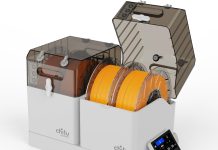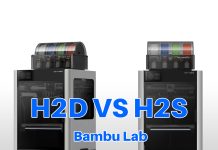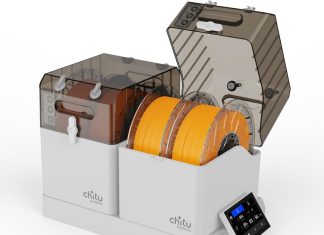3D printing continues to advance at a remarkable pace, with new machines flooding the market that promise enhanced performance, user-friendliness, and versatility. Among these, the Anycubic M7 Pro stands out as an innovative entry that caters to both beginners and seasoned professionals alike. In this article, we will take you through the entire journey of setting up and live testing the Anycubic M7 Pro, highlighting its features, settings, and performance results.
Unboxing and Setup
The Anycubic M7 Pro comes securely packaged, with components carefully arranged to prevent damage during transit. Inside the box, you’ll find:
- The 3D printer itself
- A build plate (which usually requires leveling)
- Power supply and necessary cables
- User manual and quick start guide
- Sample filament and tools for assembly
Assembly
Before printing, assembly is required. Unlike traditional kits that demand extensive mechanical expertise, the Anycubic M7 Pro is designed for a quicker setup. The instructions are straightforward, guiding users through the process of attaching the gantry to the base, connecting wiring, and securing the build plate.
One notable feature is the modular design; most parts fit together intuitively, and within about 30-45 minutes, the printer is ready for initialization. The frame feels sturdy, and the components are well-manufactured, suggesting durability and reliability.
Software and Calibration
Once set up, the next step involves software installation. The M7 Pro interfaces with Anycubic’s slicer software, which is user-friendly and packed with features. After installing the software on your computer, it’s time to configure the settings for the first print.
Calibrating the printer is crucial. The M7 Pro includes an automatic bed leveling feature, which eliminates the need to manually adjust the build plate’s height. The intuitive LCD screen guides users through the calibration, ensuring that the process is seamless.
Live Testing: First Prints
With everything set up and calibrated, it’s time for the moment of truth—printing! For our live test, we selected a standard calibration cube, a common test object to assess dimensional accuracy, layer adhesion, and surface finish.
Selected Filament
For the initial print, we used a standard PLA filament, as it is user-friendly and forgiving for beginners. Anycubic recommends quality filament, and using their sample ensures optimal compatibility.
Launching the Print
Initiating the print is a straightforward process via the slicer software, where settings like layer height, print speed, and temperature can be adjusted. After sending the file to the M7 Pro, the printer warmed up its nozzle and bed, preparing for the first layer.
Monitoring the Process
As the print began, we monitored it closely:
- First Layer Adhesion: The first layer is critical, and the Anycubic M7 Pro excelled with even extrusion and excellent adhesion to the build plate.
- Vibration and Noise: The printer operates quietly, and the movement is smooth, with minimal vibrations. This allows users to work in the same environment without distraction.
- Layer Quality: After the initial 10 layers, the quality of printing remained consistent. The layer lines were clean, and there were no signs of under-extrusion or clogging.
After about 1 hour and 20 minutes, the print completed successfully. The calibration cube exhibited accurate dimensions, demonstrating the machine’s reliability in producing precise prints.
Results and Conclusion
After a series of prints ranging from functional prototypes to intricate designs, the Anycubic M7 Pro showcased impressive versatility. The machine performed consistently well across various designs, with minimal unexpected failures—a testament to its advanced technology.
Pros
- User-Friendly Setup: Easy assembly and intuitive calibration make it accessible for beginners.
- Reliable Printing Quality: Consistent layer adhesion and dimensional accuracy.
- Quiet Operation: Runs smoothly without being overly noisy, suitable for home or office use.
- Robust Design: Well-built and designed for longevity.
Cons
- Limited Build Volume: While sufficient for many projects, advanced users may wish for a larger print area.
- Slicing Software Limitations: Though functional, more advanced users may find the slicer software lacking in features compared to competitors.
In conclusion, the Anycubic M7 Pro stands out as a worthy contender in the ever-growing 3D printer market. Its combination of ease of use, consistent performance, and build quality make it ideal for both newcomers and experienced enthusiasts. Moving from setup to print was a seamless experience, and for anyone looking to dive into the world of 3D printing, the M7 Pro is a model worth considering.






